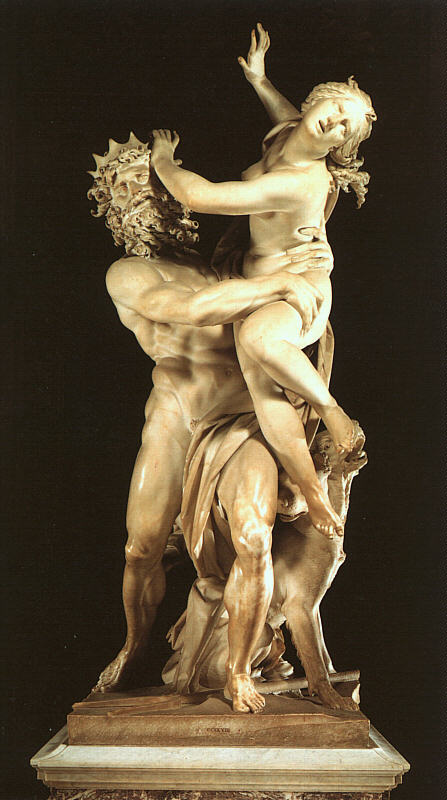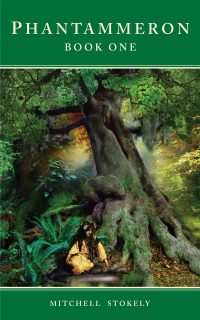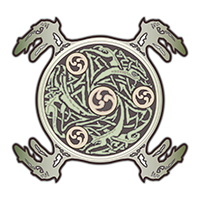In the original Greek Myth, Persephone is the daughter of the Goddess Demeter, and is abducted by the God of Wealth / Underworld, or Hades. In her sadness, Demeter plunges the earth into darkness and death until Hades eventually returns her daughter, Persephone. But Hades demands she return to him each winter. And so, in return Persephone stays with Hades for half the year in winter, returning each spring when the earth is renewed by her return.

This ancient Greek story I believe is a reflection of a much older Western / Indo-European mythology that forms the basis for similar tales throughout Europe and Western mythology. It is really about ancient Man’s belief in the death of the Sun on the Winter Solstice and the return of a new Sun child in the spring. In this story the Earth Mother becomes the archetypes of this yearly ritual and controller of its birth and death.
This “cycle” or story then forms the core archetype of ALL of Western storytelling in the form of the universal “story arc” we see repeated over and over in Western fiction. Any story in which there is a protagonist that has a struggle – or any hero-journey that resolves that struggle and ends with a catharsis, denouement, or resolution – is a reflection of this ancient cyclical Western prototype of the seasonal myth of Persephone as primeval Earth Mother. Even the story of Christ’s life follows this exact same theme, as do stories in many religions inspired by Western thought and the yearly sun cycle.
In the core ‘Earth Mother-Sun Cycle’ mythology, we have the sun in its yearly path return to the earth to bring new life in the spring. The plants then grow and die in the fall, followed by the disappearance of the sun as the earth’s rotation changes and ends around the Winter Solstice when the sun returns. In spring the cycle then starts over. This is in fact the basis for dramatic birth and death cycle of us, and the resurrection cycle of Christ in Christianity.
In the ancient mythological cycle, the Earth Mother has 3 faces: The Virgin in Spring, the Mother in Summer, and the Hag/Witch in Winter. Her sons are the Hero-Twins, one of which rules the land of the dead and the winter, the other the Sun and the summer. For one half of the year she cares for her Sun-child, for the other her Shadow-child. They are then at war for her love. And so, she is eternal/ But her twins battle for dominion of the earth and thus for her. It was the job of the Druids, the Shamans, the storytellers to repeat this Cycle of the Sun (its birth, death, and resurrection each year) and so make sure it continued.
In the Greek cults and myths that evolved, we had a layering of patriarchal myths over the more ancient matriarchal story of the Goddess as Earth Mother, and the appeasement of her so that she and her Sun-child would return each spring. And so later version of this story got muddled around the Masculine Gods and their dominion over civilized aspects of society. And so, its Zeus and later Hermes that resolves the story, not the Earth Mother. But in Persephone we still have the Spring Goddess or version of the Earth Mother, the Virgin beneath whose feet the flower bloomed when she returned to her mother from Hades in the spring. And in her mother, Demeter, she returns as the “Dark Earth Mother” or Halloween Hag that punishes the earth with eternal winter until her daughter returns. Two faces of the Goddess remain…but Persephone is in fact the Earth Mother persona that remains in story to stir us.
Interestingly, in Hades we have the Lord of the Underworld, the dark winter form of the male persona, but no twin or Sun cult figure. Yet hints of him appear in the form of Hermes, Adonis, or Apollo in versions of the Persephone tale. It’s interesting to see how as Greek myth evolved, it flip-flopped the female form into the dominion of the patriarchal form as civilization evolved (i.e. it now is called the Rape of Persephone), when in the older form, Demeter and Persephone were two of many “unnamable” names the Earth Mother took, part of a much older cult of the Matriarch of the Earth and her shining son, the Sun. In this ancient myth the cycle of the seasons is what our ancestors personified in trying to make sure the sun returned each spring to bring them food and life. Without the Earth Mother, it all died, just as Demeter destroyed the earth in sadness for her lost daughter.
But it’s the cycle of Persephone that contains the central theme that permeates all of Western Storytelling. Her story then forms the foundation for the Modern Story Arc. This structure patterns the cycle of the sun from light in summer, to dark in winter and back to sun again. It’s the descent of the protagonist in Modern books we see repeated in this cycle that eventually rises and falls in every Modern story made in Western culture.
In this structure the protagonist becomes the universal archetype of Persephone, moving through some cycle of the soul like that of the sun via conflict in the novel, like the hero searching for some spiritual growth via travel or adventure or struggle, finding the source of his/her secret truth, defeating evil or some monster, finding love of some romantic conquest gained, then returning back to the light as victor. This is the Persephone Theme, the Earth Mother Theme, we see repeated in nearly all Western novels today. Any story that has a conflict-resolution follows this exact same path.
But it’s realizing its origins in Greek Myth and much older Earth Mother myths that should help us understand the core framework of the Modern story arc as simply a repeat of the cycle of the sun in its yearly path and the importance that story has to those of us descended from cultures that lived in the far Northern Hemisphere of the earth.
Knowing how our ancestors mythologized the Solstices and Equinoxes and the seasons via Gods and Goddesses later, we can more fully understand the same cycle of death and rebirth in the repetitious story arcs we so desperately need to repeat in some form over and over and over in movies and novels. For Western culture is deeply ignorant of itself, blind to its delusions it repeats over and over and over again, strange things it seems addicted to and deep desires it can never accept yet must repeat.
— the Author
Dec 8, 2016, 10:17 AM



